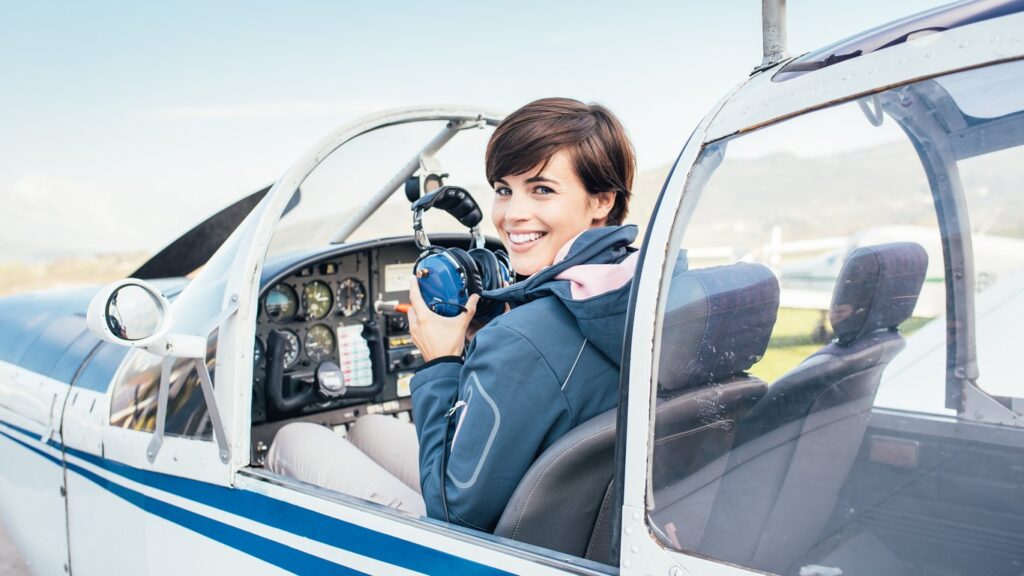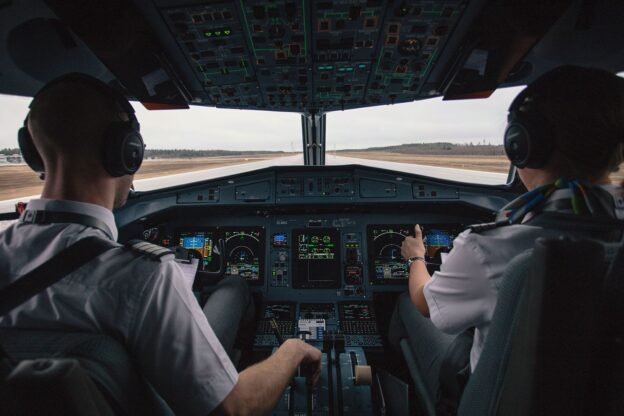If you’ve ever dreamt of soaring through the skies and taking control of an airplane, you may be wondering just how long it takes to turn that dream into reality as a pilot in Texas. Becoming a pilot isn’t an overnight endeavor, but with the right mindset, determination, and thorough training, you can make your dreams take flight. From obtaining the necessary licenses and certifications to gaining flight experience and honing your skills, becoming a pilot in Texas is a journey that requires commitment and a love for the incredible world of aviation. So, let’s take a closer look at the time it takes to embark on this thrilling career path and spread your wings in the Lone Star State.

This image is property of 883b86fe.flyingcdn.com.
Requirements to Become a Pilot
To pursue a career as a pilot, there are several requirements that you need to meet. These requirements include age requirements, educational background, and medical fitness. Let’s explore each of these requirements in detail.
Age Requirement
The age requirement to become a pilot varies depending on the type of license you want to obtain. For a private pilot license (PPL), you must be at least 17 years old. To pursue a commercial pilot license (CPL), you need to be at least 18 years of age. Lastly, to obtain an airline transport pilot license (ATPL), the minimum age requirement is 23. It’s important to keep in mind that these age requirements are for the United States and may vary slightly in other countries.
Educational Background
In terms of educational background, there is no specific degree or academic qualification required to become a pilot. However, it is recommended to have a high school diploma or equivalent. Some flight schools and aviation programs may have additional educational requirements, so it’s essential to research each program’s specific prerequisites.
Medical Fitness
Being physically fit is a crucial aspect of becoming a pilot. You will need to undergo a medical examination conducted by a certified aviation medical examiner (AME). The examination includes assessing your cardiovascular health, vision, hearing, and overall physical condition. The medical fitness requirements ensure that you can safely operate an aircraft and handle the physical demands that come with flying.
Types of Pilot Licenses
There are several types of pilot licenses that you can pursue, each with its own level of training and privileges. The three main licenses are the private pilot license (PPL), commercial pilot license (CPL), and airline transport pilot license (ATPL). Let’s take a closer look at each of these licenses.
Private Pilot License (PPL)
The private pilot license (PPL) is the first step for many aspiring pilots. With a PPL, you can fly for personal purposes or as a hobby. This license allows you to operate aircraft for non-commercial purposes and is a great way to build a strong foundation in aviation.
Training Hours
To obtain a PPL, you must complete a minimum of 40 hours of flight training. This includes both solo flight time and training with an instructor. The required training hours may vary depending on your abilities and progress.
Ground School
Alongside flight training, you will need to complete ground school. Ground school covers a range of subjects, including aerodynamics, flight rules and regulations, meteorology, navigation, and aircraft systems. It provides the necessary theoretical knowledge to complement your practical flying skills.
Flight Training
Flight training for a PPL involves learning the fundamental principles of flight, such as takeoffs, landings, climbs, descents, and maneuvers. Throughout the training, you will gain experience in different weather conditions and practice emergency procedures.
Commercial Pilot License (CPL)
The commercial pilot license (CPL) allows you to work as a professional pilot. With this license, you can fly for compensation and hire, opening up opportunities for various aviation careers.
Training Hours
To obtain a CPL, you must complete a minimum of 250 flight hours, including both solo and flight instruction time. Additionally, you must meet specific flight time requirements for various maneuvers and cross-country flights. These requirements ensure that you have the necessary skills and experience to safely operate aircraft for commercial purposes.
Ground School
Similar to the PPL, ground school is an integral part of obtaining a CPL. The curriculum covers subjects such as advanced navigation, aviation law, aircraft systems, meteorology, and human factors. Ground school provides a deeper understanding of the theoretical concepts behind flying and prepares you for the written exams required to obtain the license.
Flight Training
During flight training for a CPL, you will build upon the skills learned in the PPL training. The focus will be on advanced maneuvers, precision flying, navigation, instrument flight rules (IFR), and emergency procedures. This training is designed to enhance your ability to operate an aircraft safely and efficiently in a commercial aviation environment.
Instrument Rating
In addition to the CPL, many aspiring pilots pursue an instrument rating. An instrument rating allows you to fly in low visibility conditions and operate under instrument flight rules. This rating provides increased flexibility in terms of the weather conditions in which you can fly and opens up more career opportunities in aviation.
Airline Transport Pilot License (ATPL)
The airline transport pilot license (ATPL) is the highest level of pilot license and is required for those who wish to work as pilots for major airlines.
Training Hours
To obtain an ATPL, you must complete a minimum of 1,500 flight hours. These hours will include both multi-engine and single-engine time, as well as cross-country flights and night flying. The training hours required for an ATPL are significantly higher compared to a PPL or CPL, reflecting the increased level of responsibility and complexity involved in operating larger aircraft.
Ground School
In addition to the flight time requirements, ATPL candidates must also complete an extensive ground school curriculum. The courses cover advanced topics such as advanced aerodynamics, airline operations, aviation law, meteorology, aircraft systems, and emergency procedures. The knowledge gained through ground school prepares pilots for the written exams required to obtain an ATPL.
Flight Training
During ATPL flight training, the focus is on advanced flight maneuvers, advanced navigation techniques, and operating multi-engine aircraft. This training builds upon the skills and knowledge obtained during previous license training and prepares pilots to handle the complexities of flying large commercial aircraft.
Multi-Engine Rating
As part of the ATPL training, pilots must obtain a multi-engine rating. This rating allows pilots to fly aircraft with multiple engines and provides the necessary skills to operate larger, more complex aircraft.

This image is property of ix-cdn.b2e5.com.
Flight School Selection
Choosing the right flight school is vital to your success as a pilot. Several factors should be considered when selecting a flight school.
Accredited Pilot Schools
It is essential to choose a flight school that is accredited by the appropriate aviation authorities. Accreditation ensures that the school meets specific standards and provides quality training. Researching and selecting an accredited pilot school will give you confidence in the quality of education and training you will receive.
Comparison of Flight Training Programs
Flight training programs can vary in terms of curriculum, duration, and cost. Take the time to compare different flight training programs, considering factors such as the number of flight hours included, ground school curriculum, instructor qualifications, and available resources. This comparison will help you find a program that aligns with your goals and offers the best value for your investment.
Instructor Availability
The availability and quality of flight instructors is crucial to your training. Ensure that the flight school you choose has experienced and qualified instructors who are readily available to provide guidance and instruction. Having access to knowledgeable instructors who can effectively communicate and mentor you throughout your training is invaluable.
Financing and Cost
Becoming a pilot can be a significant financial investment. It is essential to consider the financing options and costs associated with flight training.
Tuition Fees
Flight training costs can vary depending on the flight school, location, and type of license you are pursuing. Tuition fees typically include the cost of flight instruction, ground school, use of training aircraft, and necessary materials. Research and compare tuition fees from different flight schools to find a program that fits within your budget.
Additional Expenses
In addition to tuition fees, there are other expenses to consider, such as books, materials, exams, medical examinations, and licensing fees. It’s important to factor in these additional expenses when estimating the overall cost of flight training.
Financial Aid Options
Many flight schools offer financial aid options to help aspiring pilots fund their training. Scholarships, grants, and loan programs may be available to eligible students. Research and inquire about the financial aid options offered by flight schools or external organizations to determine if you qualify for any assistance.

This image is property of scholarshipbuddytexas.com.
Flight Training Duration
The duration of flight training can vary depending on several factors, including the type of license you are pursuing, your dedication, and external factors such as weather conditions.
Private Pilot License
On average, it takes approximately 6 to 12 months to obtain a private pilot license (PPL). The duration can vary depending on the frequency of flight lessons and ground school attendance. It’s important to maintain a consistent training schedule to progress efficiently.
Commercial Pilot License
The duration of obtaining a commercial pilot license (CPL) is typically longer compared to a PPL. On average, it takes between 12 to 18 months to complete the necessary flight training, ground school, and meet the required flight hours. The duration can vary depending on factors such as individual learning abilities, flight availability, and progress.
Airline Transport Pilot License
Obtaining an airline transport pilot license (ATPL) requires a significantly higher number of flight hours and a more extensive training program. On average, it takes between 18 to 36 months to complete the necessary flight training, ground school, and accumulate the required flight hours. The duration may also be affected by factors such as weather conditions and the availability of multi-engine aircraft.
Factors Affecting Training Duration
Several factors can impact the overall duration of flight training.
Individual’s Dedication
Your personal dedication and commitment to training play a significant role in the duration of obtaining a pilot license. Attending regular flight lessons, completing assignments, and studying efficiently will contribute to a more efficient training process.
Financial Capacity
Finances can impact the pace at which you can complete flight training. Factors such as the ability to commit to full-time training or having to work part-time to finance your training may influence the duration.
Weather Conditions
Weather conditions can affect the frequency of flight lessons. Poor weather conditions, such as heavy rain, low visibility, or strong winds, can result in the cancellation of flight lessons. It is important to account for potential weather delays when estimating the duration of flight training.

This image is property of ix-cdn.b2e5.com.
Conclusion
Becoming a pilot is an exciting and rewarding journey that requires dedication, commitment, and hard work. Meeting the age requirements, having a high school diploma or equivalent, and being medically fit are the initial steps to pursue your dream of becoming a pilot. As you progress through the different licenses, such as the private pilot license, commercial pilot license, and airline transport pilot license, you will gain invaluable skills and knowledge.
Choosing an accredited flight school with experienced instructors is essential for receiving comprehensive training. Considering the financial aspects and exploring various financing options will help make flight training more accessible.
The duration of flight training can vary based on several factors, including the type of license, individual dedication, financial capacity, and weather conditions. By understanding these factors and planning accordingly, you can embark on your journey to becoming a pilot with confidence. Remember, becoming a pilot is not only about obtaining a license; it is about developing a passion for aviation and a commitment to lifelong learning. So, start your journey today and soar to new heights as a pilot.
